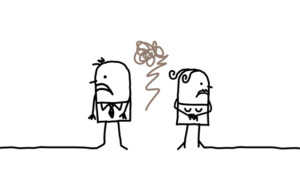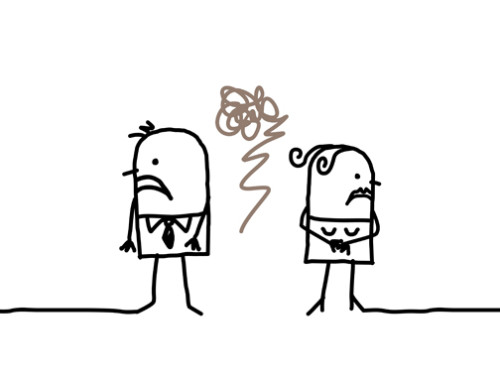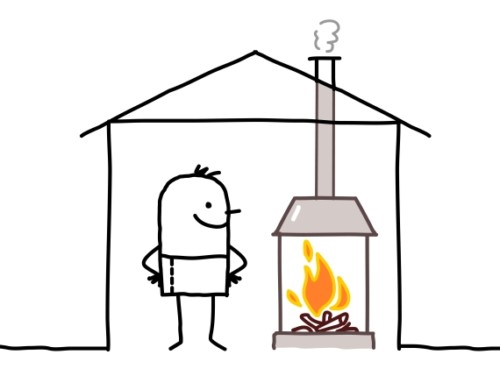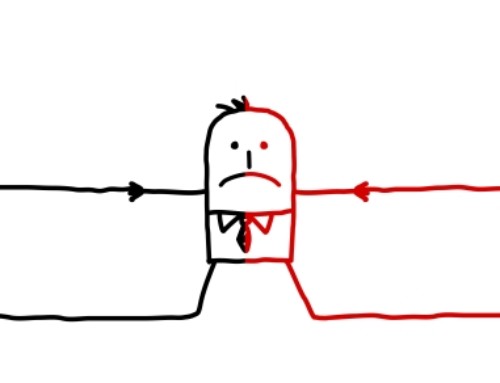In this article, I discuss how couples setting rules for fighting can decrease the negative effects of fighting on their relationships.
Just as rules for fighting in the boxing ring help to decrease the negative effects of the combat on the fighters, setting rules for fighting in the ‘relationship ring’ can help to decrease the negative effects on the two partners and on their relationship. In the following sections, I will discuss some of the rules for fighting which can help to limit the negative effects of fighting on your relationships.
Choose the right time to discuss issues
Make it a rule that you and your partner will discuss issues only at times when you are both in a relatively lower stress state which is conducive to communicating constructively. That is, only proceed with such discussions when you are both on ‘green light’ and not when on ‘red light’. Doing so will make it much more likely that the discussion will go well and any negative effects of fighting will be limited.
Choosing the right time to discuss issues also means not having discussions when one or both partners is under the influence of alcohol as this makes it much more likely that the discussion will escalate into fighting.
Stick to one issue
Focusing on one issue to discuss will make it less likely that fighting will occur and get out of hand. It will also make it more likely that constructive communication will occur so that the issue can be addressed. For other issues which need to be discussed, deal with them one at a time at other times.
Discuss issues in private
Discussing issues in front of others risks having others being negatively impacted. The most notable example is a married couple discussing issues when their children are present.
The negative effects which can occur for children in these instances are significant and are even greater if fighting occurs during the discussion. So make it a rule to discuss issues when nobody else is within earshot.
Choose the right way to discuss issues
Discuss issues in a manner which is conducive to constructive communication and which limits fighting. This entails giving each person their turn to discuss their thoughts and feelings about the issue in depth while the other person listens, takes notes, and reflects back to the speaker with language such as, “What I heard you say your thoughts and feelings are is…”
This manner of discussing issues ensures that each partner gets a chance to talk in depth about their thoughts and feelings while enhancing listening and empathy. It also limits fighting by decreasing opportunities for interruptions.
Finally, it allows for both partners to work together to try to address the underlying thoughts and feelings revealed in the discussion.

Use an agreed upon time-out signal
Both partners should agree to a signal which either or both of them can use to shut the discussion of the issue down at any time. The signal can be as simple as “Can we take a break?” The signal should be used at any time either partner believes that they and/or their partner are no longer in a state in which they can communicate constructively.
An obvious time to use the signal is when the discussion has escalated into a fight. However, it is even better if the signal is used earlier when it is clear that continued discussion is likely to lead to fighting. Using the signal at these earlier times can prevent discussions from turning into fights.
Get together to debrief the fight
Getting together some time after to debrief the fight in a discussion will help to get your relationship back on track. Using the above strategy in which each partner takes turns ‘having the floor’ to discuss their thoughts and feelings leading up to, during and after the fight while the other partner actively listens is an excellent way to achieve this goal.
The discussion can also include each partner discussing events going on for them at the time which may have contributed to their behaviour during the fight. It is also often helpful for the partners to discuss difficult events from their past which may have been ‘triggered’ by the events leading up to and during the fight.
Finally, it is also helpful for the partners to problem-solve to identify ways to prevent future fights in similar circumstances and to apologize to each other for the role they played in the fight.
Keep the relationship friendship going in the wake of fights
A relationship can often recover from fights between the partners. On the other hand, it is much harder for a relationship to recover when the partners grow distant from each other following fights.
Doing so causes the relationship friendship to decline. It is this consequence of fighting that often inflicts fatal damage on the relationship. Resolve to keep the relationship friendship going in the aftermath of fights while you work on addressing fighting so that your relationship can stay strong.
Establish zero tolerance zones
Fighting should involve zero tolerance for the following: (1) Physical aggression; (2) Swearing; (3) Verbal aggression in the form of name-calling, insults, and negative statements about the other person’s character.
Some people are of the view that it is impossible for them to refrain completely from the above ‘zero tolerance zones’—that they have no choice but to engage in these extremely damaging ways of fighting when the other person ‘pushes their buttons’. In reality, it is a choice to react in these ways.
It is also a common misconception that refraining from using these behaviours when you are in an argument is tantamount to backing down. In fact, you can defend your position in an argument without backing down by stating your points in reference to behaviours, issues and facts. If both partners take this position and avoid the zero tolerance behaviours there may still be a fight but it will be one which is unlikely to inflict serious damage on one or both partners and on the relationship.
May you and your relationship partner set and follow rules for fighting,
-Dr. Pat






Leave A Comment